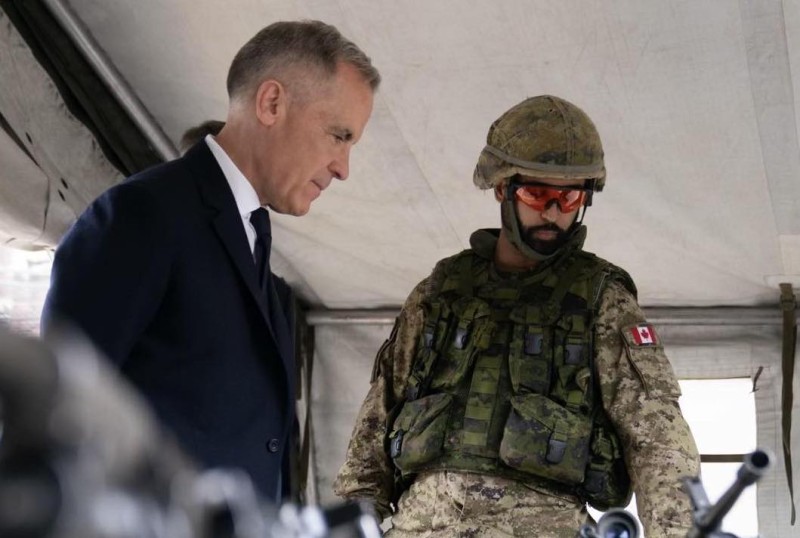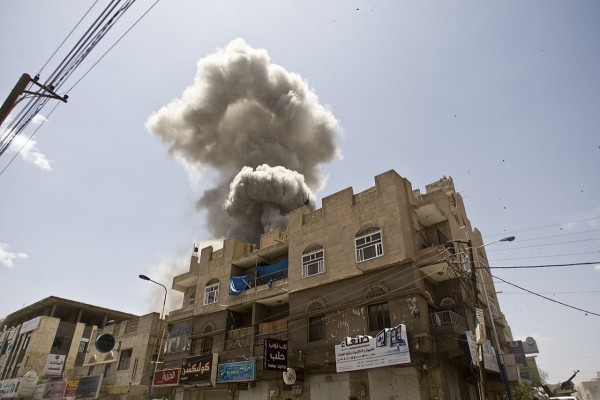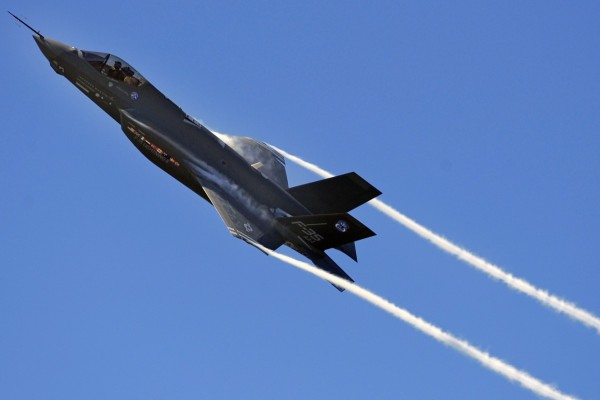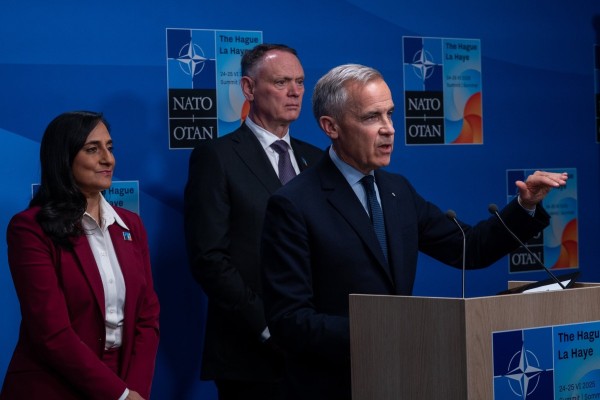Carney’s military buildup benefits the US, not Canada
Despite the PM’s lofty claims, Canada’s increased military spending will only deepen its entanglement with the US war machine

On June 9, Prime Minister Mark Carney announced that Canada will meet the two percent of GDP spending target pushed by Washington, committing $9 billion in new funding for the Department of National Defence over the next ten months. Photo courtesy Mark Carney/Facebook.
A few months ago, Prime Minister Mark Carney declared that Canada’s old relationship with the United States is “over.” Since his election victory on April 28, however, Carney has done a complete about-face, in action if not rhetoric. The Liberal government is currently tying Canada’s military and foreign policy even more tightly to the American empire, and a US administration whose annexationist rhetoric helped to propel Carney to office in the first place.
Carney claims that the process of “deepening integration” between the US and Canadian militaries is over. “We are in a position now where we co-operate when necessary,” he said, “but not necessarily co-operate.” In practice, though, Carney’s military policy looks exactly like the deepening integration he has decried.
The prime minister often speaks about reducing Canada’s reliance on the US, but his government is ramping up military spending, which is precisely what the Trump and Biden administrations have urged. The new Liberal government is also deepening Canada’s role in European rearmament, which serves the Trump administration’s goal of increasing NATO members’ proportionate defence spending.
Ottawa has also committed to “strengthening NORAD” and is in talks to join Trump’s “Golden Dome” missile defence system, a project that would cost Canadians $61 billion. On top of that, the government continues to mull a $19 billion purchase of US-made F-35 warplanes, whose spare parts will be owned and controlled by the US government. The Department of National Defence will complete its review of the fighter jet purchase sometime this summer, but it refuses to state whether its report will be released to the public.
On June 9, Carney announced that Canada will meet the two percent of GDP spending target pushed by Washington, committing $9 billion in new funding for the Department of National Defence over the next ten months. This guideline was always arbitrary, as evidenced by the fact that NATO Secretary-General Mark Rutte is now calling for five percent spending after Trump demanded as much.
A demand for five percent is wildly excessive—especially considering that NATO members already account for more than half of global military spending. Though they represent just 16 percent of UN-recognized countries, NATO states are responsible for 55 percent of worldwide military expenditures. The alliance is already a formidable war machine; it hardly needs two percent of each member’s GDP, let alone five. Yet that is precisely what Washington and NATO leadership are now pushing for.
Carney’s claim that increased NATO spending will strengthen Canadian sovereignty vis-à-vis the US is misleading. As Richard Nixon once remarked, NATO was “the only collective body that ever worked” because “we [the US] were in charge.” Greater involvement in a military alliance effectively led by Washington does little to create distance from American influence—and may, in fact, deepen it.
What’s more, NATO has always shaped Canadian foreign policy, including during the era of “deepening integration” whose end Carney has proclaimed. Pierre Trudeau once stated: “We had no defence policy, so to speak, except that of NATO. And our defence policy had determined all of our foreign policy. And we had no foreign policy of any importance except that which flowed from NATO.” Indeed, Canada’s role in NATO was part of its deepening integration with the US.
NATO has retained its fundamentally pro-US orientation since the end of the Cold War. Increased military spending among member states continues to benefit American weapons manufacturers—a key factor in the alliance’s post-1991 expansion. During that period, representatives from US arms companies traveled to Central and Eastern Europe to encourage governments to join NATO. Notably, Bruce Jackson, a senior executive at Lockheed Martin—the world’s largest arms producer—founded the US Committee to Expand NATO, using it as a platform to lobby both Congress and European leaders in favor of enlargement. Since then, every major NATO military intervention—whether in Serbia, Afghanistan, Libya, or Ukraine—has aligned with broader US strategic interests and enriched American defense contractors. To suggest that NATO operates independently of, or as a counterbalance to, US power is historically inaccurate.
Carney’s efforts to spin capitulation to US spending demands into bold protection of Canadian sovereignty made for one of the most surreal moments of his June 9 speech. After pronouncing that Canada is “too reliant on the United States,” Carney revealed that his government will meet NATO’s two percent spending guideline half a decade ahead of schedule, with plans to “further accelerate” spending in coming years.
To make matters worse, Carney refuses to state that Canada will not raise its military spending to Trump’s new demand of five percent of GDP. When asked about the five percent target, Carney simply said that his government will “surpass NATO commitments within five years.”
Five percent of Canada’s current GDP is $150 billion. According to writer and activist Dave McKee:
$150 billion could build around 430,000 publicly owned and delivered social housing units each year. That’s more than 2 million truly affordable units in the space of five years, which is precisely what is needed to confront the housing crisis across the country. That amount could also be used to build around 3,600 new schools, or 60 new hospitals, each year. Or it could create in the area of 1.7 million full-time jobs paying $40 per hour.
In addition to increased spending, Carney has offered Canada’s “many strategic resources” to the US-led NATO alliance, including critical minerals, which the US government has been eyeing for years. In February, former Prime Minister Justin Trudeau was caught on a hot mic saying that Trump’s threats of annexation were directly tied to Canadian critical mineral wealth. Now Carney is offering Canada’s critical minerals to NATO, a military alliance effectively controlled by the US since its founding in 1949.
Carney’s foreign policy stance reflects a broader trend: in an era of renewed great-power competition, Canada’s political and economic elite have chosen to deepen their alignment with the US—an increasingly unstable global power. This posture not only risks escalating international tensions but also carries serious consequences for people living in Canada.
Canada is already one of the world’s largest weapons dealers—the last thing wealthy defence contractors need is more support, but that is precisely what Carney is providing. Meanwhile, a growing number of Canadians face challenges securing shelter, sustenance, and medical care. Indeed, food insecurity, homelessness, and quality of health care worsen each year in Canada in direct conjunction with growing inequality that benefits Canada’s elite, including weapons manufacturers.
The carbon emissions driven by rising military spending pose a serious threat to the climate and environment, as evident in the devastating wildfires currently sweeping through the Prairie provinces. Although many of these fires are sparked by human activity, climate change-induced higher temperatures worsen their intensity and duration. Notably, emissions from National Defence—set to increase with the new spending package—are largely exempt from Canada’s national carbon reduction targets, highlighting a significant gap in the country’s climate strategy.
In reality, Canada’s increased military spending will only deepen its entanglement with the US war machine, reinforce subservience to American geopolitical interests, and contribute to escalating global tensions. It will accelerate environmental destruction amid a worsening climate crisis and divert crucial resources away from desperately needed social services during a housing emergency, rising food insecurity, and a collapsing health care system.
Put simply: this is more of the same—failed priorities that sacrifice the well-being of Canadians and the planet for the sake of militarism and elite profit.
Owen Schalk is the author of Targeting Libya: Canadian Dams, Canadian Bombs, an exploration of Canada’s pivotal yet little-known role in Libya’s history, forthcoming from Lorimer Books.










